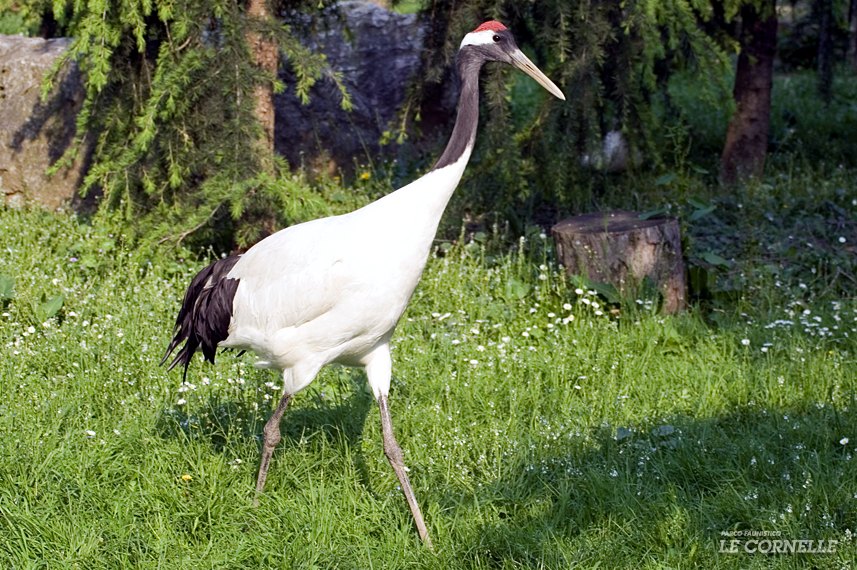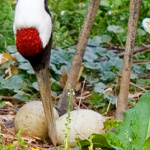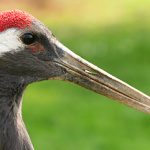-
Common name:
MANCHURIAN CRANEScientific name:
Grus japonensisClass:
BirdsOrder:
GruiformiFamily:
GruidaeProvenance:
Manchuria (North East China) – (Korea – Japan)Diet:
plant – small invertebratesHabitat:
Japanese PlainsReproduction:
spawn: 2 – Incubation: about 30 days -
The Japanese Crane lives in swamps, river banks and rice fields. It feeds on vegetable substances, grains of every type, cereal sprouts, herbs and small roots with the addition of insects, worms and lizards. The Japanes Crane’s loud penetrating call is caused by the long, S-shaped (coiled) trachea that is embedded in the sternum and causes a powerful resonance.
It nests only in a limited territory of Manciuria, in the Ussuri region up to the middle part of the Amur river, in Korea and Japan. After the typical weeding dance, that precedes mating, it lays two eggs on the ground.
The survival of this bird is seriously in danger. In the wild, only 1700/2000 Japanese Cranes are thought to exist. Thanks to reproduction in captivity, this species can be preserved. These cranes are currently included in the European program (EEP) for conservation and reproduction.
-
Grus japonensis
-
Grus japonensis
-
Grus japonensis

















